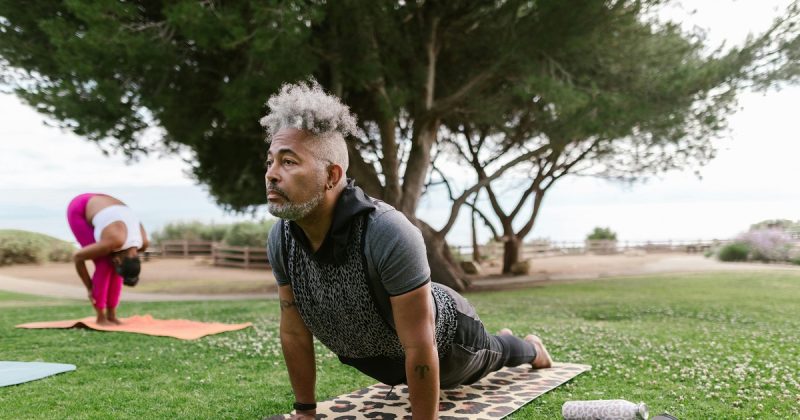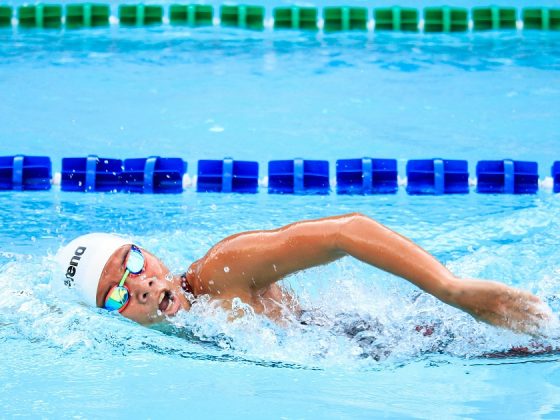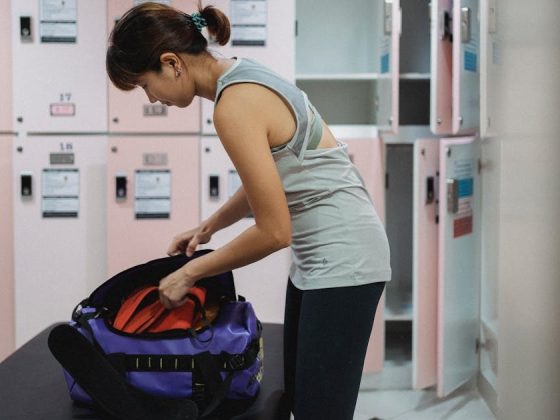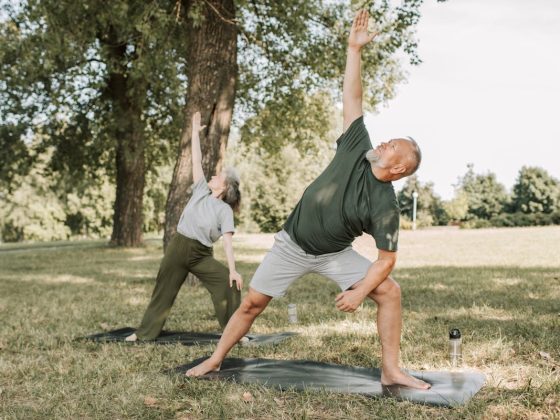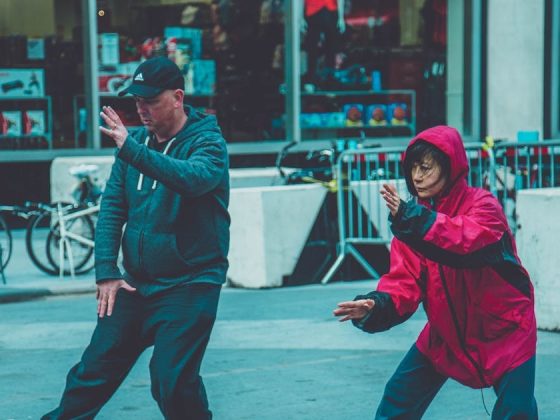Aging is a natural process that brings many changes to the body. While it is impossible to stop the effects of aging, staying active through exercise can help improve health, maintain independence, and enhance the overall quality of life for seniors. With proper guidance and a tailored exercise program, seniors can remain strong, mobile, and mentally sharp well into their golden years. This article explores the best exercises for seniors, delving into the benefits of physical activity, different types of exercises suited for older adults, and tips for starting and maintaining an exercise routine.
The Importance of Exercise for Seniors
Regular physical activity is crucial for people of all ages, but for seniors, it plays an especially vital role in maintaining physical and mental well-being. As people age, muscle mass naturally declines, bones can become weaker, balance can falter, and flexibility may diminish. Exercise is a powerful tool to counteract these effects of aging. Here are several reasons why exercise is particularly important for seniors:
- Improves Mobility and Flexibility
As seniors age, their range of motion and flexibility can decrease, leading to stiffness and discomfort. Regular stretching and mobility exercises help improve joint flexibility, allowing older adults to move more freely and perform daily activities with ease. Exercises that focus on flexibility are often considered some of the best exercises for seniors, as they help maintain independence and reduce the risk of injury. - Boosts Muscle Strength
Muscle mass and strength naturally decrease with age, a condition known as sarcopenia. Without regular strength training, seniors may find it difficult to carry out tasks such as lifting groceries, climbing stairs, or even standing up from a chair. Strength-training exercises help combat muscle loss, improve balance, and enhance overall physical performance. - Enhances Cardiovascular Health
Heart disease is one of the leading causes of death among older adults. Regular aerobic exercises like walking, swimming, or cycling can improve heart health, lower blood pressure, reduce cholesterol levels, and increase lung capacity. These types of exercise keep the cardiovascular system in good shape and can prevent chronic conditions such as heart disease and stroke. - Promotes Mental Health and Cognitive Function
Exercise is not just good for the body; it also has powerful effects on the brain. Physical activity increases blood flow to the brain, which can enhance cognitive function, improve memory, and even slow the progression of neurodegenerative diseases like Alzheimer’s. Moreover, regular exercise releases endorphins, the body’s natural mood enhancers, which can help alleviate symptoms of depression and anxiety. - Improves Balance and Reduces Fall Risk
Falls are a major concern for seniors, often leading to serious injuries like fractures or broken bones. Exercises that focus on improving balance and coordination are essential for reducing the risk of falls. Balance exercises, such as yoga or Tai Chi, are among the best exercises for seniors as they can improve stability, build core strength, and enhance body awareness. - Increases Longevity and Quality of Life
Seniors who engage in regular physical activity are more likely to live longer and enjoy a better quality of life. Exercise helps keep the body strong and functional, allowing older adults to continue engaging in activities they enjoy and maintaining their independence for longer.
Best Exercise for Seniors: Tailoring to Individual Needs
Every senior is unique, and the best exercise program should be tailored to meet individual needs and fitness levels. Below are some of the most effective types of exercises for older adults, each offering distinct benefits.
1. Aerobic Exercises
Aerobic exercises, also known as cardiovascular exercises, are designed to get the heart pumping and improve overall cardiovascular health. These exercises can be low-impact and are perfect for seniors looking to boost their endurance and lung capacity. Some of the best aerobic exercises for seniors include:
- Walking: Walking is a simple, low-impact exercise that can be done anywhere. It is easy on the joints, promotes cardiovascular health, and can improve overall endurance. Seniors can start with short walks and gradually increase their duration and intensity as they build stamina.
- Swimming: Swimming is an excellent form of exercise for seniors because it is easy on the joints while providing a full-body workout. Water resistance builds muscle strength, improves cardiovascular health, and enhances flexibility.
- Cycling: For those who enjoy cycling, either on a stationary bike or a traditional bicycle, this is a great way to improve leg strength, balance, and endurance. Cycling is also low-impact, making it easier on the knees and hips.
- Dancing: Dancing is a fun way to engage in aerobic exercise. Whether in a class or at home, dancing improves coordination, balance, and cardiovascular health.
2. Strength Training
Strength training is essential for maintaining muscle mass and strength, which naturally decline with age. These exercises help seniors stay strong, prevent muscle loss, and improve their ability to perform daily activities. Strength training exercises can be done with free weights, resistance bands, or even bodyweight exercises. Some examples of effective strength training exercises for seniors include:
- Bodyweight Squats: Squats are excellent for strengthening the legs and glutes. Seniors can perform squats using just their body weight or hold onto a chair for balance.
- Wall Push-Ups: Push-ups can be modified to make them easier for seniors by performing them against a wall instead of on the floor. This variation helps strengthen the chest, shoulders, and arms.
- Bicep Curls with Resistance Bands: Resistance bands are great for seniors because they provide a gentle, controlled way to strengthen muscles without the risk of injury. Bicep curls using resistance bands can help maintain arm strength.
- Leg Raises: Leg raises can be done while sitting or standing and help improve leg strength and balance. For seated leg raises, seniors can sit in a chair and lift one leg at a time, holding it for a few seconds before lowering it back down.
3. Flexibility and Stretching Exercises
Flexibility exercises are essential for keeping joints mobile and preventing stiffness. They improve range of motion, reduce the risk of injury, and enhance overall physical function. Incorporating stretching into a daily routine is one of the best exercises for seniors to maintain flexibility and independence. Examples of flexibility exercises include:
- Seated Hamstring Stretch: This stretch helps loosen the hamstrings, which can become tight with age. Seniors can sit on the edge of a chair, extend one leg out, and gently reach towards the toes.
- Shoulder Rolls: Rolling the shoulders backward and forward can help loosen tight shoulder muscles and improve upper-body flexibility.
- Neck Stretches: Gently tilting the head from side to side helps stretch the neck muscles and improve range of motion in the cervical spine.
- Standing Calf Stretch: This stretch helps improve flexibility in the calf muscles and lower legs, which can become tight with prolonged sitting.
4. Balance and Stability Exercises
Balance exercises are crucial for seniors because they help improve coordination, reduce the risk of falls, and strengthen the core. Some of the best balance exercises for seniors include:
- Standing on One Foot: This simple exercise can be done by holding onto a chair for support while lifting one foot off the ground and holding the position for a few seconds. Over time, seniors can try to balance without holding onto the chair.
- Heel-to-Toe Walk: Walking heel-to-toe in a straight line helps improve balance and stability. This exercise can be done along a hallway or in an open space.
- Tai Chi: Tai Chi is a low-impact exercise that combines slow, flowing movements with deep breathing. It has been shown to improve balance, coordination, and flexibility in seniors, making it one of the best exercises for seniors.
- Yoga: Yoga is another excellent practice for improving balance and flexibility. Many yoga poses focus on stability, core strength, and body awareness, which are all essential for preventing falls.
Tips for Getting Started with an Exercise Program
For seniors who are new to exercise or have been inactive for some time, it’s important to start slowly and progress gradually. Here are some tips to help seniors get started and stay motivated:
- Consult a Healthcare Professional
Before beginning any exercise program, it’s a good idea for seniors to consult with their doctor, especially if they have any pre-existing health conditions. A healthcare professional can help ensure that the exercise plan is safe and appropriate. - Start Slowly and Progress Gradually
It’s important for seniors to start with exercises that match their current fitness level. Beginning with short, low-intensity workouts and gradually increasing the intensity and duration will help prevent injury and build confidence. - Set Realistic Goals
Setting small, achievable goals can help seniors stay motivated and see progress. For example, a goal might be to walk for 10 minutes three times a week and gradually increase the duration to 30 minutes. - Listen to the Body
Seniors should always listen to their bodies and avoid pushing themselves too hard. If they experience pain, dizziness, or shortness of breath during exercise, they should stop and rest. It’s important to recognize the difference between discomfort and pain, and to avoid exercises that cause pain. - Incorporate Variety
Mixing up different types of exercises, such as walking, strength training, and yoga, can help keep the routine interesting and provide comprehensive benefits. Variety also ensures that different muscle groups are worked, improving overall fitness. - Stay Consistent
Consistency is key when it comes to exercise. It’s important to make physical activity a regular part of the weekly routine. Even small amounts of exercise done regularly can lead to significant health benefits. - Join a Group or Class
Exercising in a group setting, such as a fitness class for seniors, can be motivating and fun. It also provides a social aspect, which is important for mental well-being. Many community centers, gyms, and senior centers offer classes specifically designed for older adults.
Overcoming Barriers to Exercise for Seniors
While the benefits of exercise are clear, many seniors face barriers that can make it challenging to stay active. Here are some common barriers and solutions to help overcome them:
- Fear of Injury
Many seniors worry about getting injured while exercising, especially if they have a history of falls or joint pain. Solution: Start with low-impact exercises such as walking, swimming, or chair-based exercises that are gentle on the joints. - Limited Mobility or Chronic Conditions
Seniors with mobility issues or chronic conditions such as arthritis or osteoporosis may find some exercises difficult. Solution: Choose exercises that can be modified or adapted to individual abilities, such as chair yoga, water aerobics, or resistance band exercises. - Lack of Motivation
It can be hard to stay motivated, especially if exercise feels like a chore. Solution: Find enjoyable activities, whether it’s dancing, gardening, or joining a fitness class with friends. Setting small goals and tracking progress can also help. - Lack of Time
Even busy schedules can make it difficult for seniors to prioritize exercise. Solution: Break exercise into smaller chunks, such as three 10-minute walks instead of one 30-minute walk. Finding opportunities to move throughout the day, such as stretching during TV commercials, can also help.
Vibrant, and Independent Life for Many Years to Come
The best exercise for seniors is one that they enjoy and can do consistently. Whether it’s walking, strength training, yoga, or swimming, staying active is key to maintaining physical and mental well-being in later life. With the right approach, seniors can reap the many benefits of exercise, from improved mobility and strength to enhanced cognitive function and emotional well-being. By making physical activity a regular part of their routine, seniors can continue living a healthy, vibrant, and independent life for many years to come.
